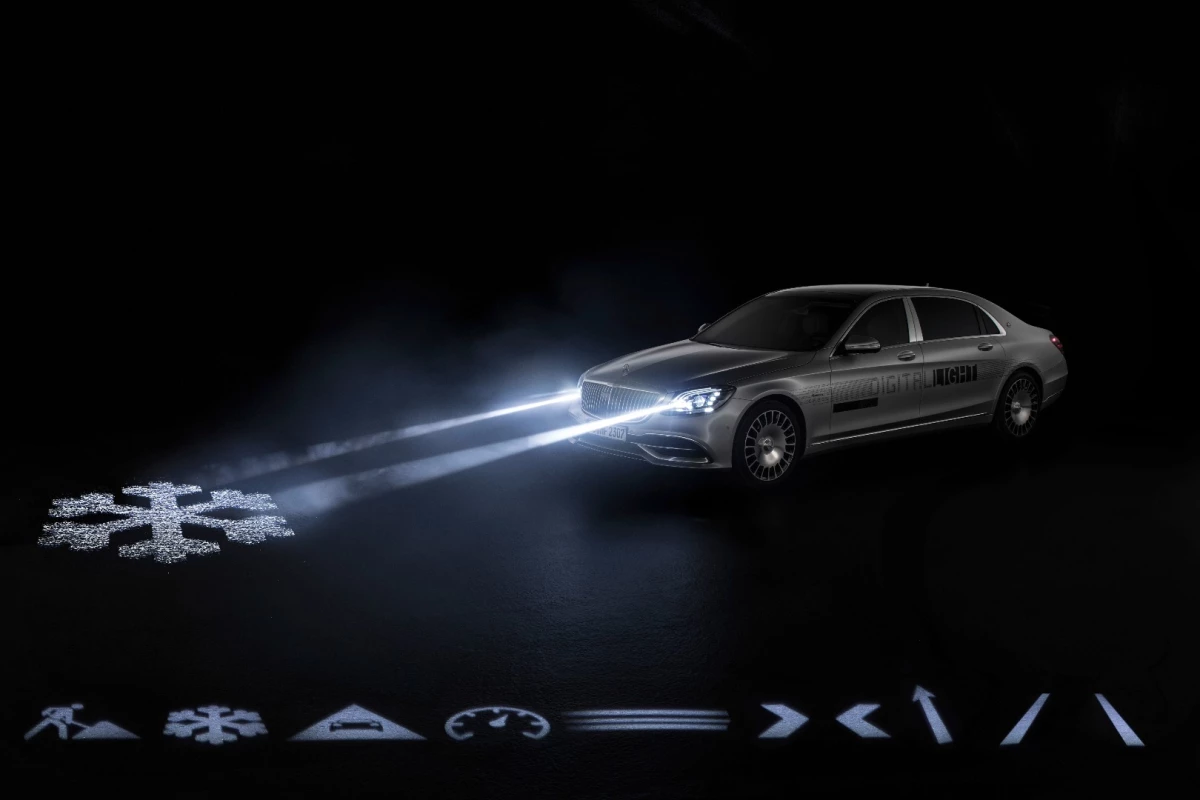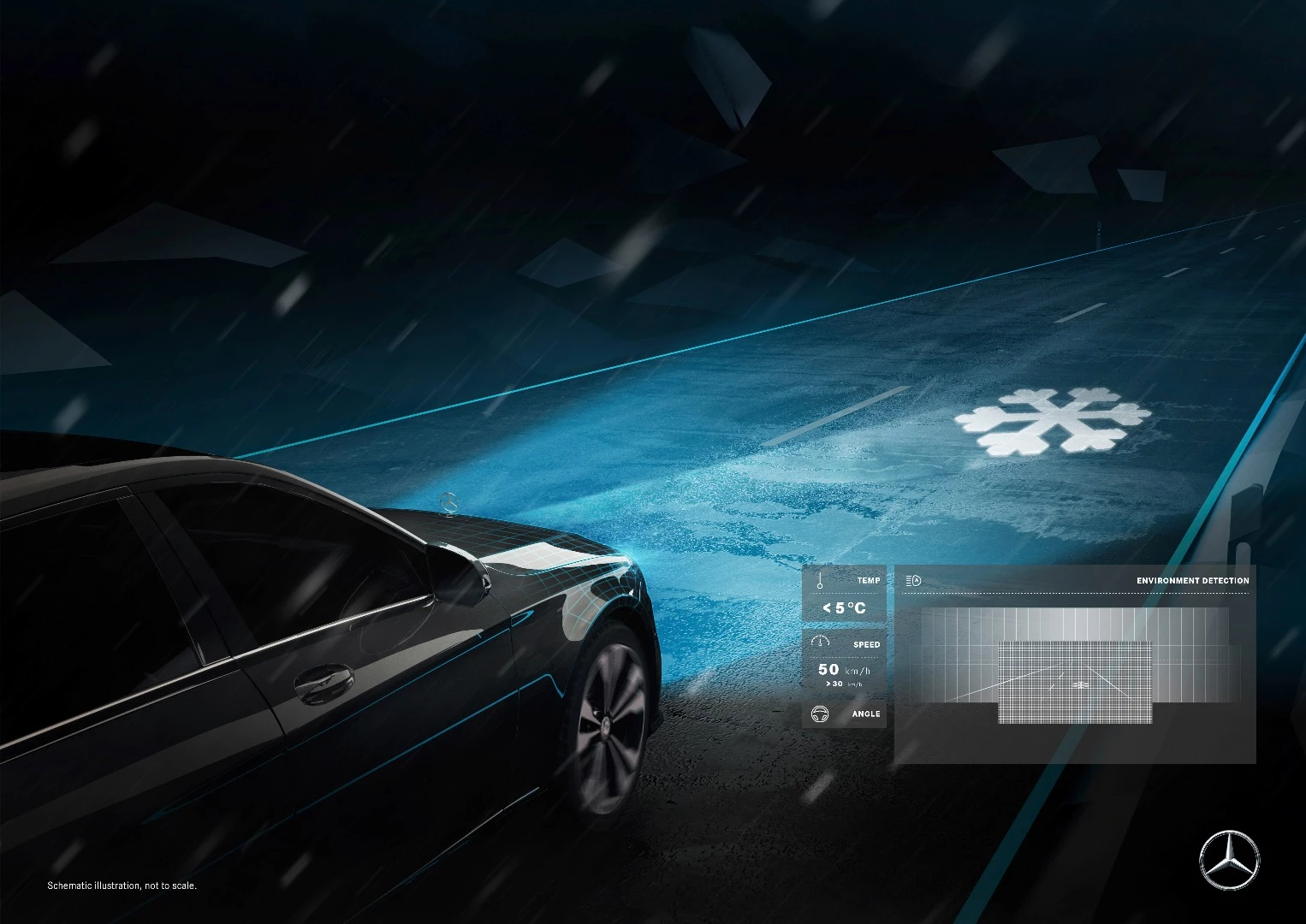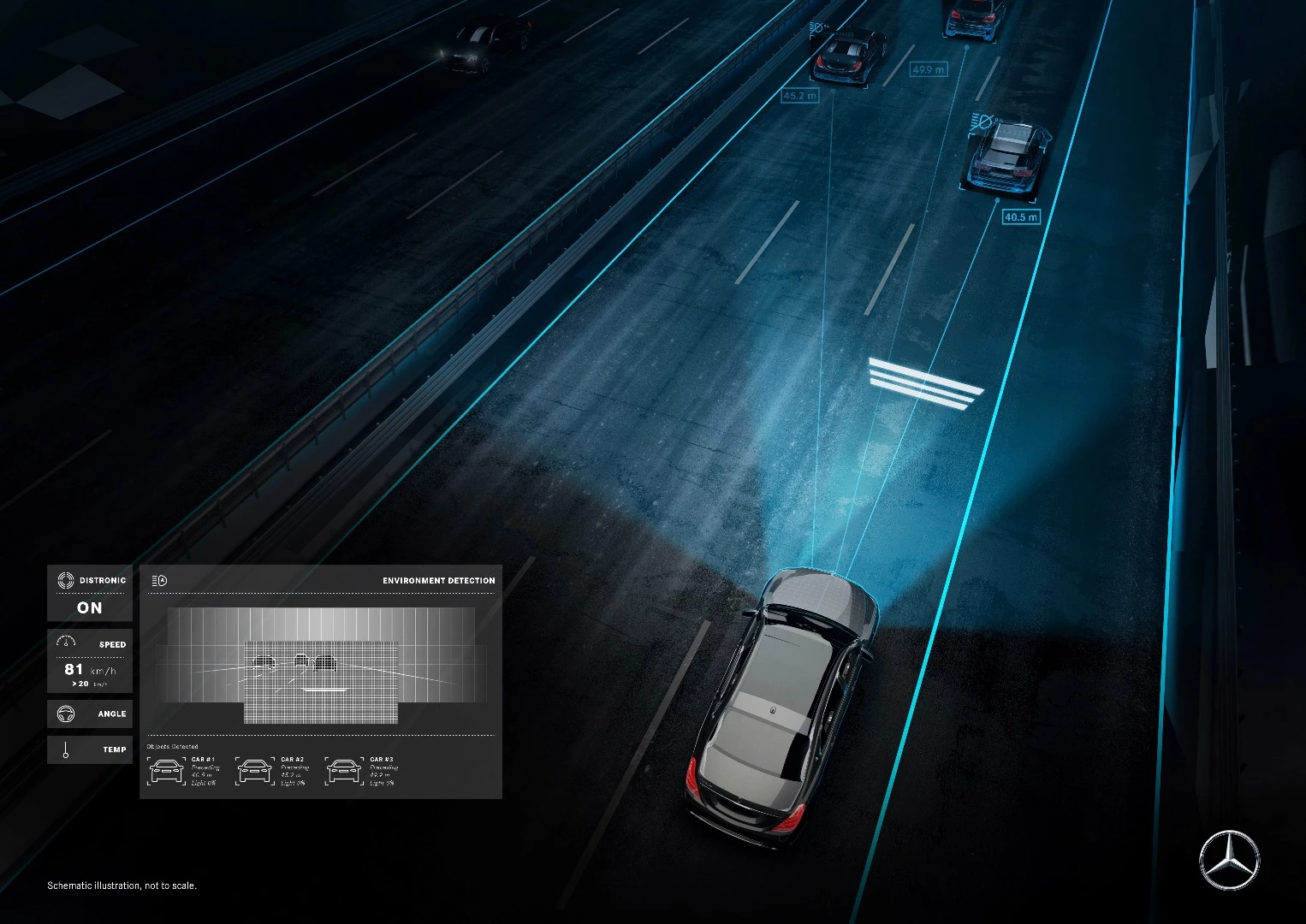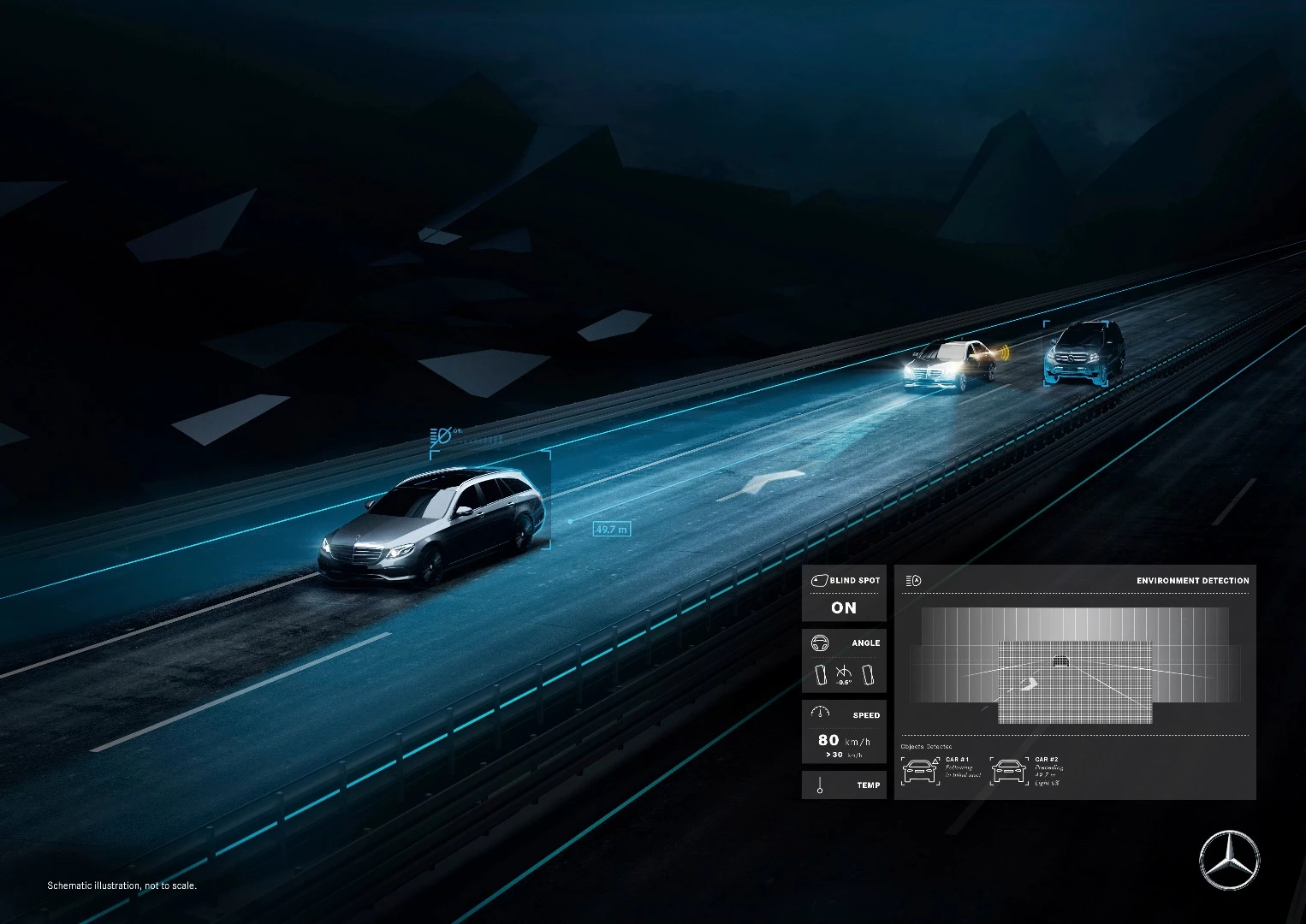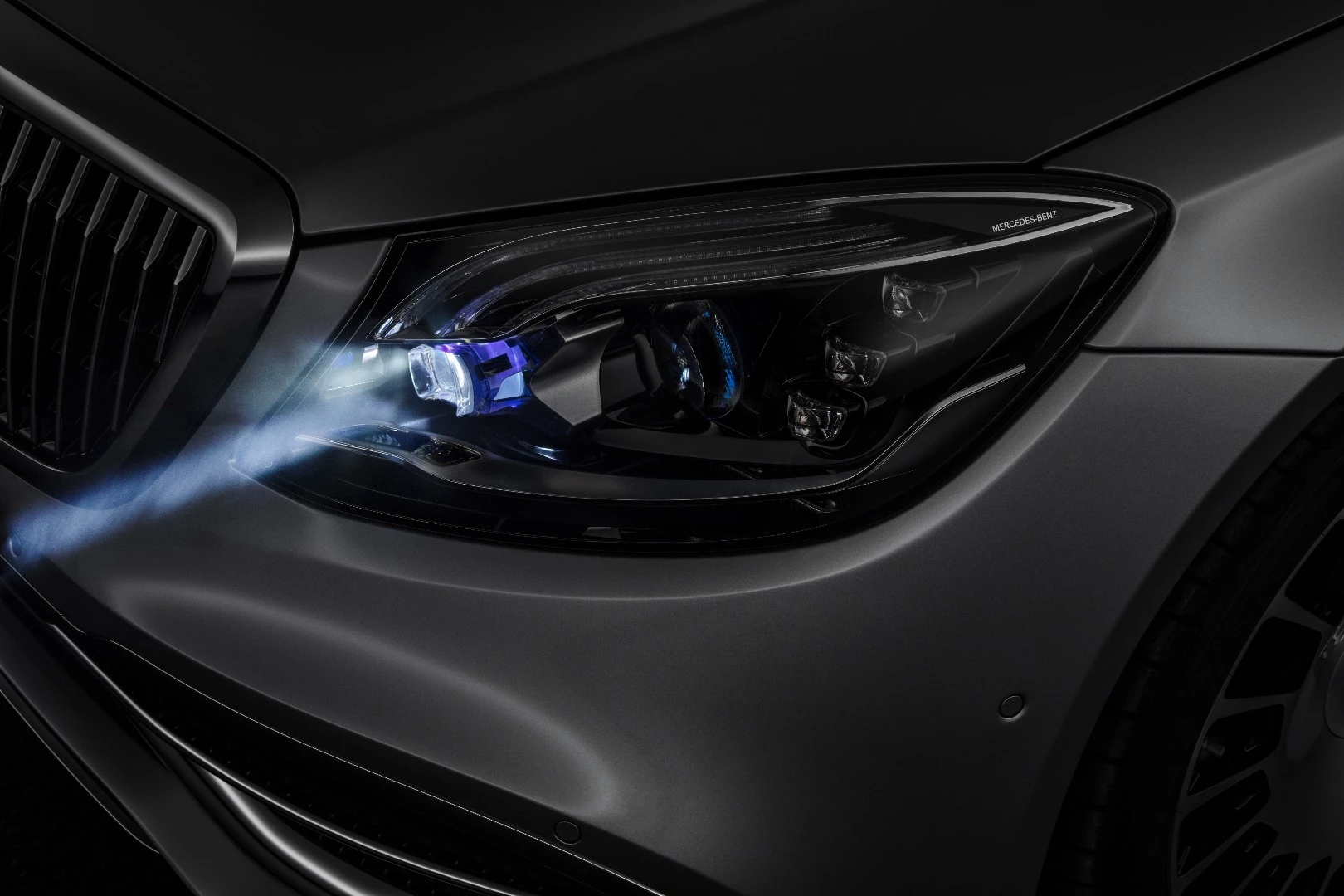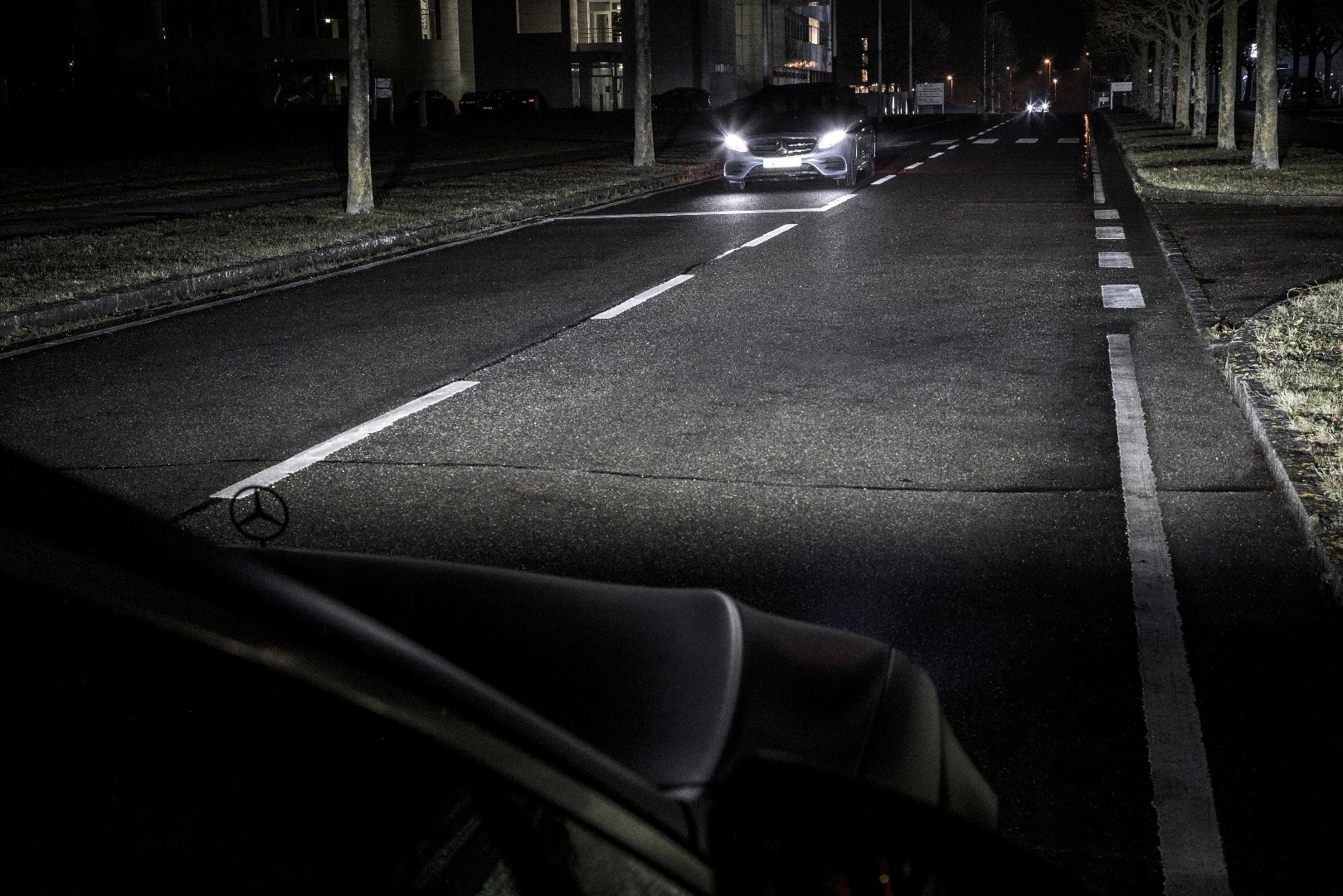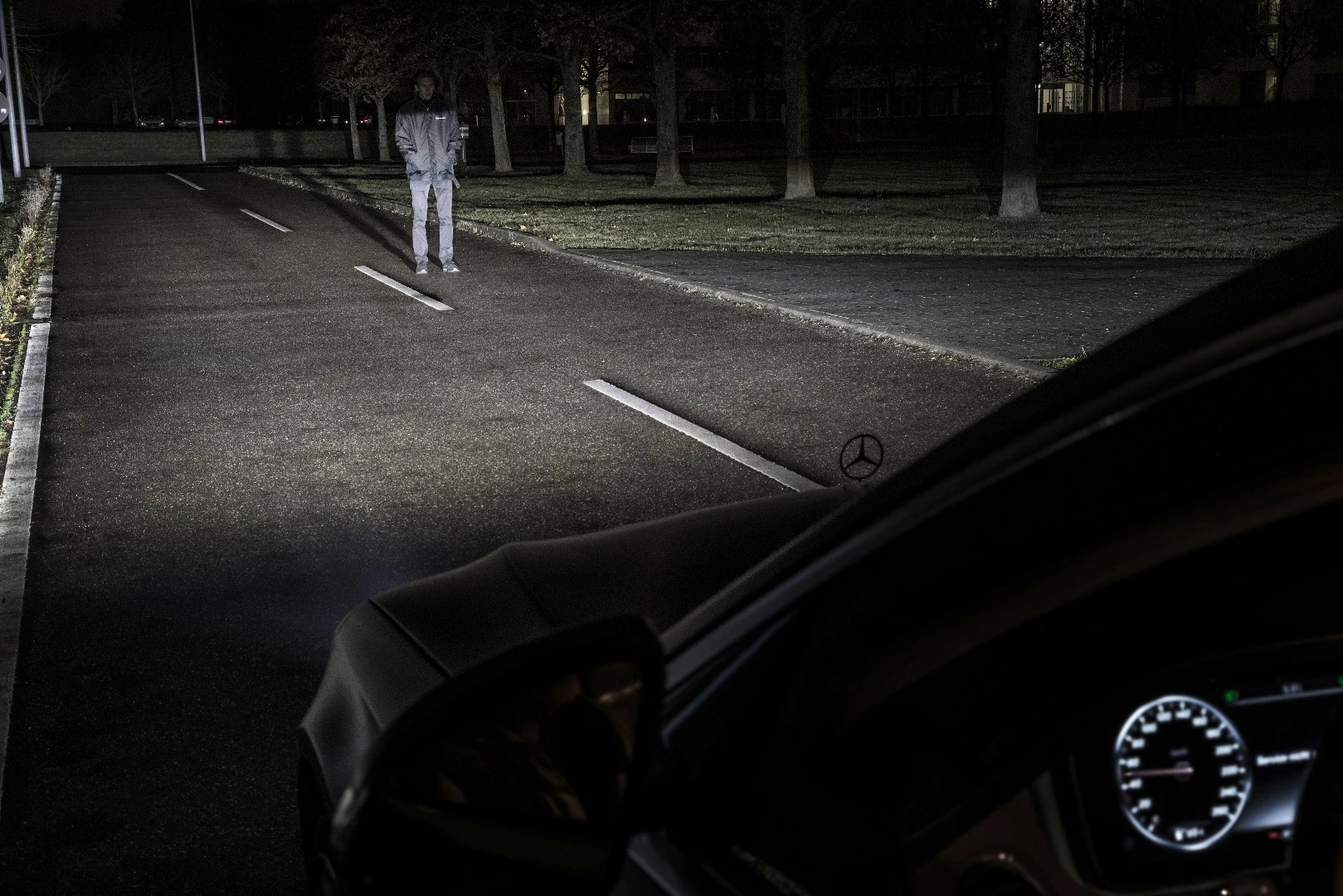New S-Class Maybachs will soon get an impressive intelligent headlight upgrade. Digital Light puts a million pixels of resolution into each headlight, and works with the car's sensors and computers to display a bunch of driver-assist information right there on the road in front of you.
Way back in 2009, we covered the Experimental Safety Vehicle, a technology demonstrator from Mercedes-Benz showcasing some pretty out-there technological innovations for the time. Inflating seatbelt airbags, back seat cameras to show you what the kids are up to, and high-friction braking bags that inflate when you're faced with an unavoidable crash and haul the car to a halt much faster than you could with just four tires on the road.
But the one that really caught our imagination at the time was partial main beam intelligent headlights, which had 100 individually controlled LEDs built into them and interacted with sensors on the car to do things like keeping your high beams on and shining them everywhere except into the eyes of oncoming drivers. Or visually highlighting pedestrians who step out on to the road when you've got your low beams on.
Now, nearly 10 years later, Mercedes-Maybach is taking the concept to whole new levels.
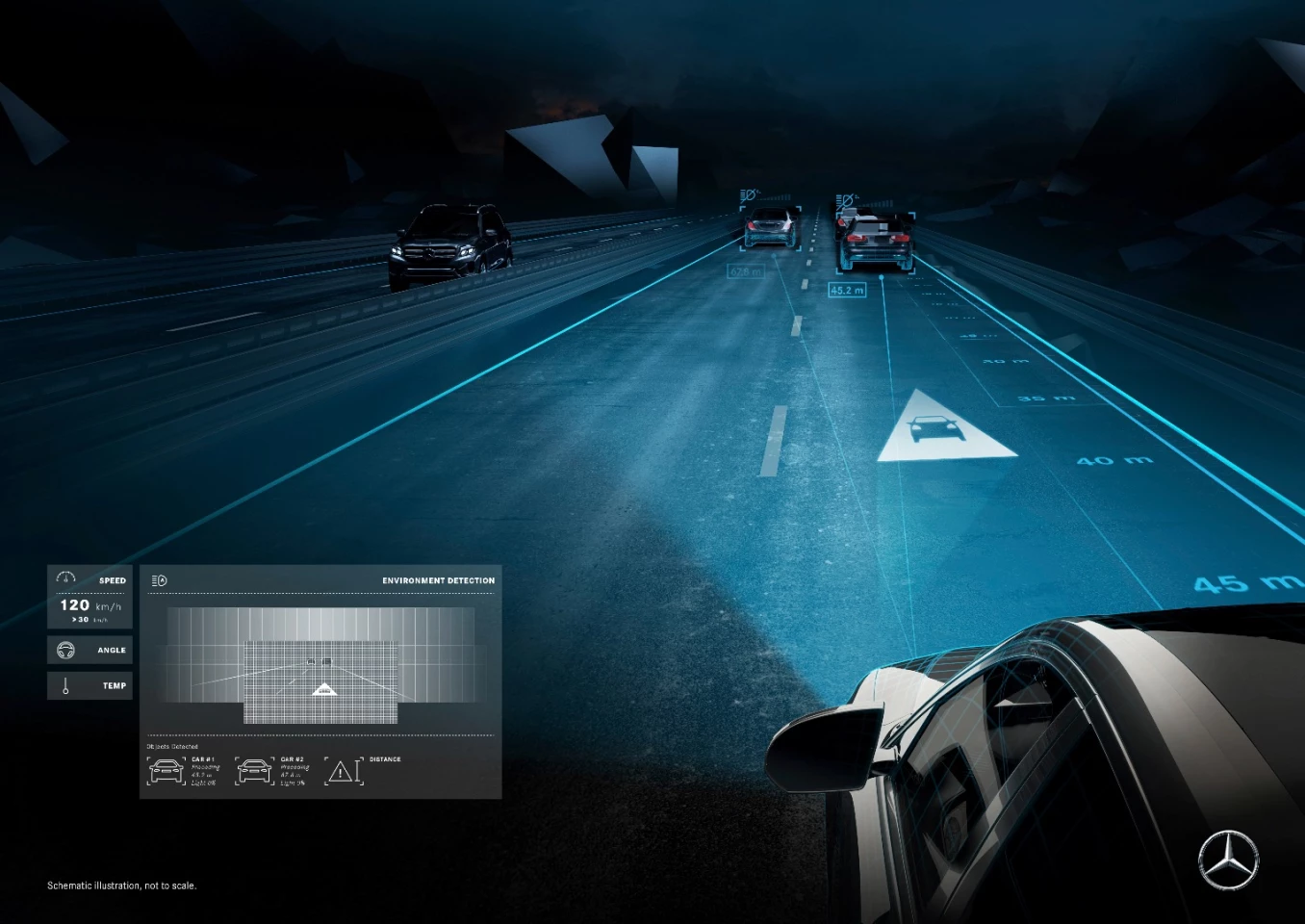
Digital Light, which will start rolling out on selected S-Class vehicles sometime in the next few months, gives drivers no less than 2 million pixels in their headlights, allowing incredibly fine tuning of these kinds of effects, as well as opening up the ability to light-paint the road with high-resolution symbols and markings to assist the driver.
We're talking things like big white lines representing the total width of the car, to help you figure out if you can fit through a narrow gap. Big fat arrows pointing to pedestrians that the computer figures are in danger of stepping out in front of you. A speed-sensitive distance mark showing you roughly how far you should stay back from the car in front.
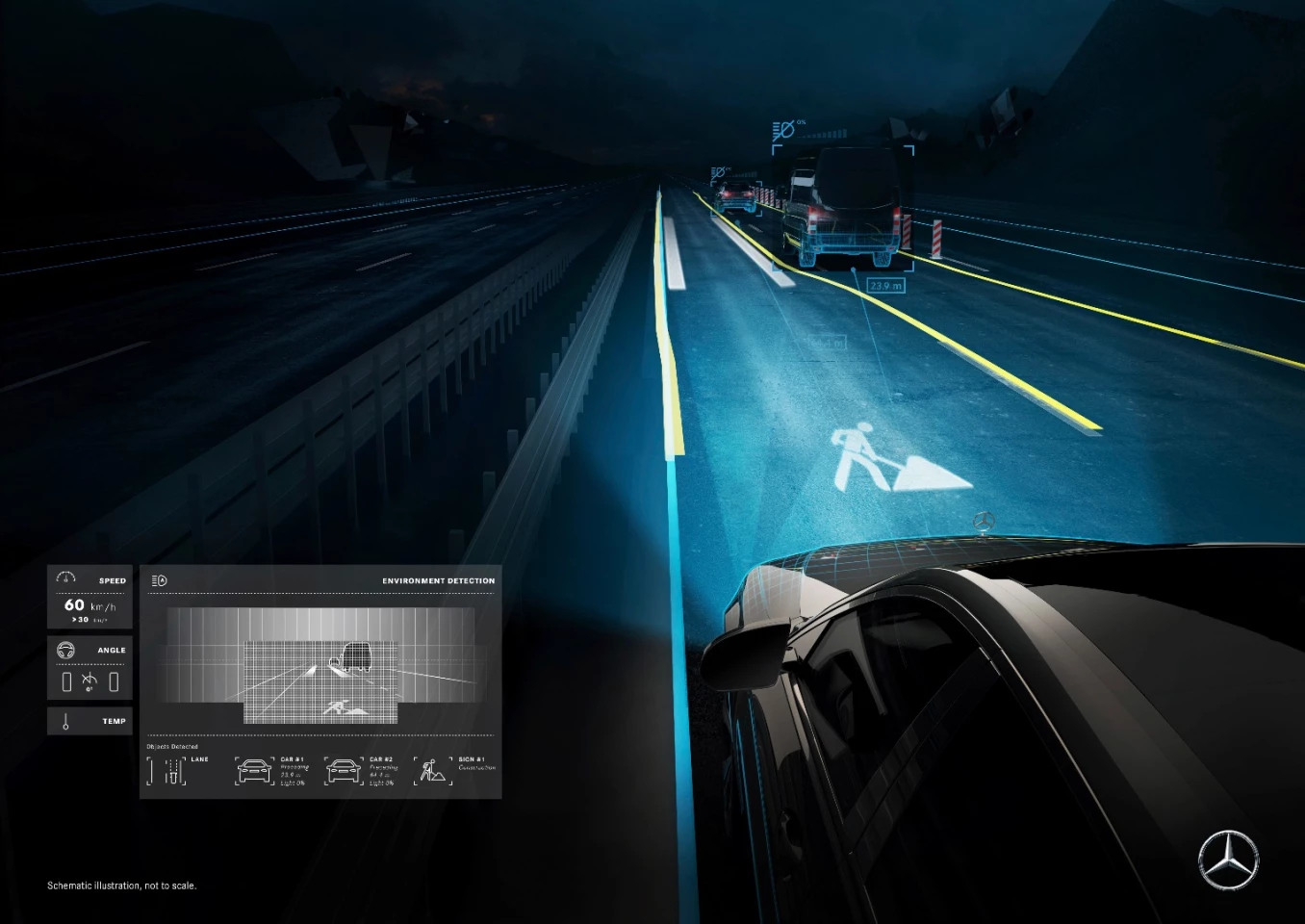
There's also a bunch of other symbols coming; blind spot style warnings will show up on the road as chevrons pointing you back into your lane before you even go to look at the mirrors. Lane keeping symbols. Construction site and low-grip surface symbols, as well as speed symbols.
The selective high beam function has become smarter too, going out of its way only to dim the lights that would shine directly into people's faces. Digital Light will shine high beams on cars, but track and block out the front and rear windscreens, and it will illuminate pedestrians' bodies, but without assaulting their faces with bright light.
Theoretically, of course, pretty much anything could be projected in 2-megapixel black and white resolution, though rules on acceptable content will likely be quite restrictive.
Source: Daimler
